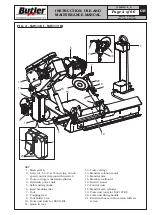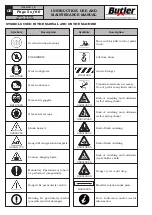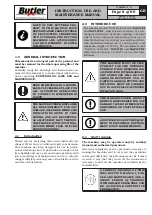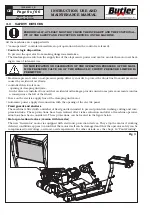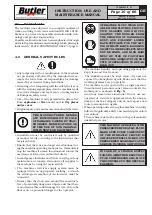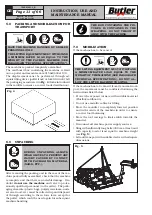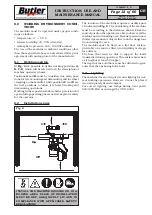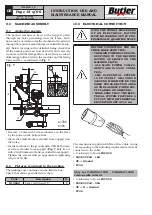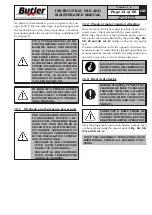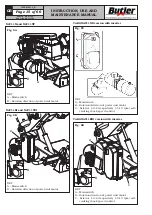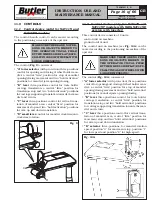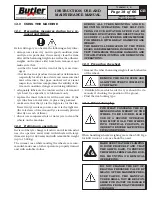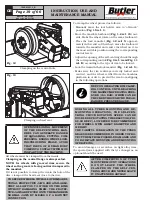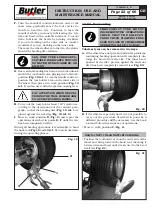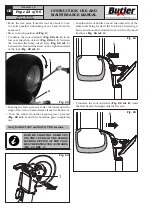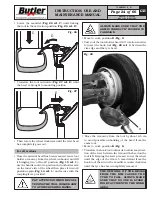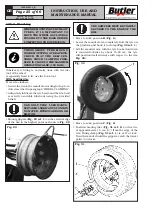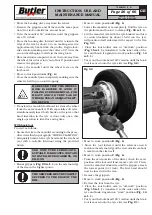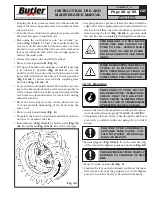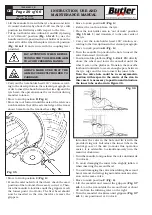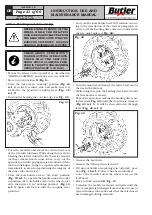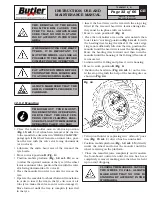
INSTRUCTION, USE AND
MAINTENANCE MANUAL
GB
Page 18 of 66
12.0 USING THE MACHINE
12.1 Precaution measures during tyre re-
moval and fitting
Before fitting a tyre, observe the following safety rules:
• always use clean, dry and in good condition rims
and tyres; in particular, if necessary, clean the rims
after all the balancing weights (as well as the adhesive
weights on the inner side) have been removed, and
make sure that:
- neither the bead nor the tread of the tyre are dam-
aged.
- the rim does not produce dents and/or deformation
(especially for alloy rims, dents can cause internal
micro-fractures, that pass unobserved at visual
inspection, and can compromise the solidity of the
rim and constitute danger even during inflation);
• adequately lubricate the contact surface of rim and
tyre bead. Use specific tyre lubricants only.
• replace the inner tube valve with a new valve. If the
tyre tube has a metal valve, replace the grommet.
• make sure that the tyre is the right size for the rim.
Never fit a tyre unless you are sure it is the right size
(the rated size of the rim and tyre is usually printed
directly on each of them).
• do not use compressed air or water jets to clean the
wheels on the machine.
12.2 Preliminary operations
In view of the tyre changer structure and of its intended
use, the operator must work with wheels with large
diameter (up to 1640 mm) and with remarkable weight
(up to 1500 kg).
The utmost care while moving the wheels is recom-
mended: make use of other operators, properly trained
and with suitable clothes.
DURING ALL TYRES MOUNTING AND DE-
MOUNTING OPERATIONS, THE SELF-CEN-
TRING CHUCK ROTATION SPEED CAN BE
DOUBLED BY ROTATING THE SELECTOR (FIG.
8C-8D REF. C). LOW SPEED IS RECOMMENDED
FOR WHEELS WITH GREAT DIAMETER AND
WEIGHT.
THE CAREFUL LUBRICATION OF THE TYRES
BEADS IS RECOMMENDED, IN ORDER TO PRO-
TECT THEM FROM POSSIBLE DAMAGES AND
TO FACILITATE MOUNTING AND DEMOUNTING
OPERATIONS.
12.3 Preparing the wheel
• Remove the wheel balancing weights from both sides
of the wheel.
REMOVE THE VALVE STEM AND
ALLOW THE TYRE TO COMPLETE-
LY DEFLATE.
• Establish from which side the tyre should be de-
mounted, checking the position of the groove.
• Find the rim locking type.
12.4 Wheel clamping
FOR WHAT CONCERNS THE DI-
MENSIONS AND WEIGHT OF THE
WHEEL TO BE LOCKED, MAKE
USE OF A SECOND OPERATOR
WHO MUST HOLD THE WHEEL
INTO VERTICAL POSITION, IN
ORDER TO ENSURE SAFE OPERA-
TIVE CONDITIONS.
When handling wheels weighing more than 500 Kg a
fork-lift truck or a crane should be used.
MAKE SURE THAT RIM CLAMPING
IS DONE PROPERLY AND THAT
THE GRIP IS SAFE, TO PREVENT
THE WHEEL FROM FALLING DUR-
ING MOUNTING OR REMOVAL
OPERATIONS.
DO NOT CHANGE THE SET OP-
ERATING PRESSURE VALUE BY
MEANS OF THE MAXIMUM PRES-
SURE VALVES. THE MANUFAC-
TURER SHALL NOT BE RESPON-
SIBLE FOR INJURY OR DAMAGE
ARISING FROM UNAUTHORISED
CHANGES.
7505-M001-3_B
NAV11N - NAV11NT
NAV11EI - NAV11TEI

